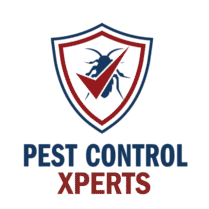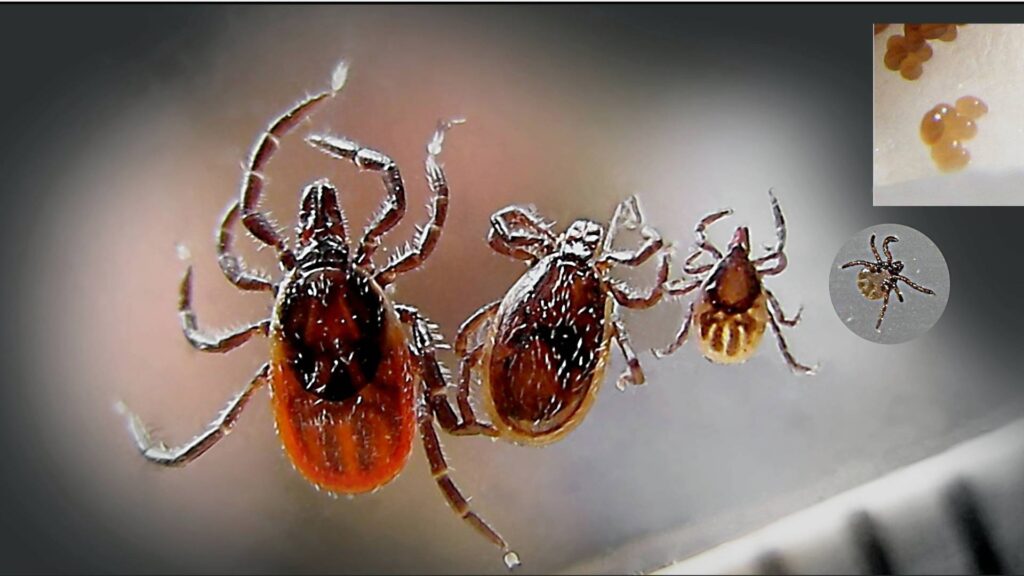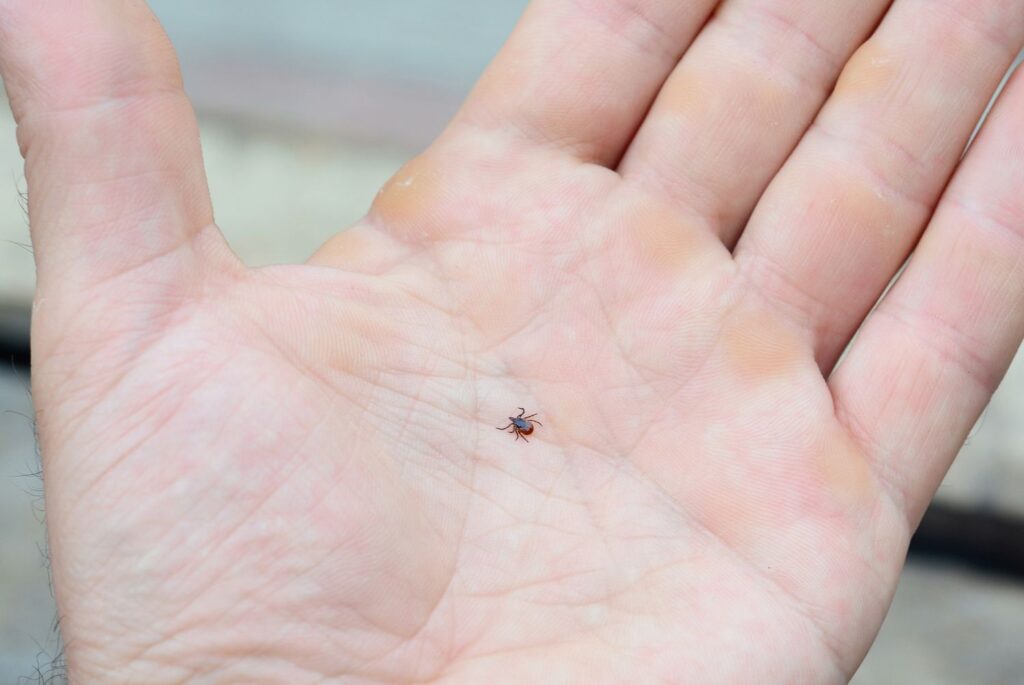Ticks can present a major concern for property owners who hope to avoid irritating bites or potential health complications. These small, blood-feeding arachnids thrive in grassy fields, wooded areas, or places where wildlife and pets circulate. Once ticks establish themselves on lawns or sneak indoors, they may remain hidden for weeks or even months, latching onto people or animals when the opportunity arises. In North Royalton and other parts of Ohio, ticks become especially noticeable during warm or humid seasons, though certain species stay active into the cooler months. If you need help understanding how to get rid of ticks in North Royalton, consulting a professional exterminator often delivers the most reliable relief.
Pest Control Xperts specializes in tick removal in Ohio, ensuring properties remain safe and comfortable for residents and animals. Our services address both immediate infestations and long-term preventive measures, including yard maintenance advice and targeted treatments that eliminate ticks at multiple life stages. This service page explores the most common tick species in Ohio, the dangers they pose, signs of an infestation, and how hiring a knowledgeable exterminator in North Royalton can keep ticks off your lawn and away from loved ones.
Why Ticks Thrive in Ohio
Ohio’s climate, featuring mild to hot summers and transitional periods of humidity, provides ticks with several months of favorable weather for growth and reproduction. Even in cooler seasons, ticks remain active if they find a warm microenvironment or attach to suitable hosts. Below are main factors that support tick activity in North Royalton and similar communities:
- Seasonal Warmth and Humidity
Ticks prefer warmer conditions above 45 degrees Fahrenheit and relatively humid surroundings to survive. Ohio’s spring and summer months, plus damp early fall, create prime conditions for ticks to breed and quest for hosts. - Presence of Wildlife
Deer, rodents, raccoons, or stray animals may drop ticks while passing through yards or shared green spaces. Once ticks are on the property, they can wait on tall grass or shrubs for an unsuspecting person or pet to walk by. - Pets as Hosts
Dogs and cats that roam outside often pick up ticks on fur, then bring them indoors. Without consistent use of veterinary-approved preventatives, fleas and ticks have free rein to feed. If ticks drop off inside, they can lay eggs or search for a new host. - Vegetation and Landscape
Overgrown lawns, thick brush, or piles of leaf litter offer ticks shelter from harsh sun, maintaining the moisture they need. By cleaning up yard debris, trimming grass, and pruning shrubs, property owners reduce tick habitat areas. - Indoor Heating
Though many ticks remain outside, some species may enter homes, detaching from pets or clothing. Warm indoor environments let them continue their life cycle if they can feed periodically, making a hidden infestation possible.
Because ticks adapt well to diverse environments, an integrated strategy from a professional exterminator can drastically cut the chances of ticks reoccurring on a property.
Common Tick Species in Ohio
While multiple tick species exist, a few stand out in North Royalton and nearby areas:
- Blacklegged Tick (Deer Tick)
This species can carry Lyme disease if infected, making it a major health concern in Ohio. Blacklegged ticks wait on brush, tall grass, or leaf litter, attaching to passing hosts. Their bite can transmit bacteria, so prompt removal is key if one is discovered on skin or fur. - American Dog Tick
Often found in grassy fields or around yard edges, the American dog tick feeds on dogs, cats, and sometimes people. Though less likely to carry Lyme disease, this species can transmit Rocky Mountain spotted fever. Thorough yard treatments and consistent pet care measures help control them. - Brown Dog Tick
Known for potentially completing its life cycle indoors, the brown dog tick may infest kennels, veterinary clinics, or homes if dogs remain untreated. These ticks hide behind baseboards or in cracks, feeding on dogs repeatedly. If left unchecked, a brown dog tick population can spread throughout a building. - Lone Star Tick
Recognized by a white dot on the female’s back, the Lone Star tick appears in some regions of Ohio. It has an aggressive feeding style, seeking out hosts actively rather than waiting passively. Although not as prevalent statewide, it can pose risks if it bites humans or pets.
No matter the species, seeing ticks repeatedly around a home suggests that property owners could need professional interventions. Because each species has slightly different behaviors, an exterminator can tailor tick removal in Ohio to the identified type.
Risks Associated with Ticks
Ticks do more than create annoyance or itchy bites. A few important points underscore why property owners in North Royalton take tick removal so seriously:
- Potential Disease Transmission
Certain ticks carry bacteria or viruses, such as Lyme disease or Rocky Mountain spotted fever. An infected tick must remain attached for some time to transmit pathogens, but early removal lowers risk. Pets can also develop tick-borne illnesses, requiring veterinary care. - Constant Irritation
Tick bites cause red bumps or welts, occasionally leading to complications like allergic reactions or secondary infections if the bite is scratched heavily. Pets may be restless or overgroomed when multiple ticks feed. - Hidden Infestations
Because ticks often thrive at ground level, in shaded yard corners, or on pets, owners may not realize the extent of the issue until repeated bites occur. A small number of ticks can grow into a larger problem if not dealt with promptly. - Indoor Concerns
Ticks that drop off pets indoors may search for new hosts or lay eggs if conditions suit them. Though less common than fleas, indoor tick populations create ongoing risks of bites and potential disease. A thorough approach addresses both yard and interior spaces. - Anxiety for Residents
Many people become anxious upon noticing multiple ticks around a home, worrying about possible infections for children or pets. Peace of mind often hinges on eliminating ticks from living areas altogether.
Indicators of a Tick Infestation
Property owners should watch for signs that ticks have invaded:
- Ticks Found on Pets
One of the most common ways people discover tick infestations is by spotting ticks latched onto dogs or cats. Inspecting furry companions, especially behind the ears or around the neck, helps reveal any feeding ticks. - Tick Bites on People
Ticks bite humans around ankles, legs, or other exposed skin. If a person notices a tick attached or experiences clusters of bites with no other clear cause, a yard or indoor area might harbor ticks. - Visible Ticks Indoors
Occasionally, ticks drop from pets to floors, carpets, or furniture. Seeing ticks crawl around indoors suggests that a larger population may exist outside or that an established infestation has started inside. - Pet Scratching or Irritation
Heavily infested animals scratch or groom themselves repeatedly, even developing hair loss or raw patches. If fleas are not found, ticks might be responsible for pet discomfort. - Reports of Increased Tick Activity
Sometimes neighbors mention ticks in shared green areas, or local news highlights a seasonal spike. If adjacent properties battle ticks, your yard could also be at risk.
Recognizing these signals and contacting an exterminator in North Royalton quickly can halt ticks before they spread more widely and place family members or pets in jeopardy.
Why a Professional Exterminator Aids Tick Removal
Do-it-yourself products might temporarily reduce visible ticks but rarely address entire populations in yard foliage or egg clusters. Professional tick removal in Ohio outperforms these short-term fixes thanks to:
- In-Depth Inspections
An exterminator evaluates a yard for likely breeding grounds—moist areas, thick undergrowth, or pet resting spots. By pinpointing each prime tick habitat, targeted applications become more effective. - Integrated Methods
Experts apply insect growth regulators to hinder tick development, along with sprays that kill adult ticks. This two-fold strategy breaks the life cycle, leaving fewer survivors to reinfest. Professionals also discuss yard maintenance and pet preventive treatments. - Safe, Focused Product Use
Spraying large amounts of chemicals indiscriminately can harm beneficial insects or pollute water. Licensed professionals use tick control products exactly as labeled, directing them to areas ticks favor. This preserves a safer environment. - Attention to Interior Spaces
If ticks have established themselves indoors, specialists know how to treat carpets, furniture seams, or baseboards without endangering residents or pets. Vacuuming recommendations and pet grooming plans further cut off flea or tick feeding cycles. - Collaboration with Pet Health Measures
Though exterminators do not treat animals directly, they coordinate with owners or veterinarians to ensure dogs or cats remain on tick preventatives. Keeping pets protected stops ticks from returning indoors. - Follow-Up for Completeness
Because tick eggs can hatch weeks later, multiple visits or phone check-ins confirm new hatches do not reignite infestations. Professional oversight reduces the risk of recurrence and frustration.
Pest Control Xperts: Tick Removal in Ohio
Pest Control Xperts brings comprehensive solutions to families, businesses, or property managers facing tick problems in North Royalton:
- Thorough Property Inspection
We start with a detailed walk-through of yards or indoor areas where ticks may hide. Our exterminator pinpoints tall grass, leaf piles, or damp corners that keep ticks thriving. Indoors, we look for spots pets lounge or potential hidden tick clusters. - Tailored Treatment Plan
Depending on the severity of the infestation, we apply a combination of insect growth regulators, adulticides, and yard sprays that kill ticks at each life stage. We concentrate on fenced perimeters, under decks, or along brush lines where ticks wait for passing hosts. - Safe Application Protocols
Our staff follows strict guidelines to protect people and pets while ensuring ticks contact lethal products. We never overspray unnecessarily, focusing instead on strategic zones that ticks favor. In enclosed areas, we direct minimal chemicals precisely where needed. - Pet Considerations
Because pets remain a main carrier, we recommend owners consult veterinarians for monthly or year-round tick preventatives. By combining yard treatments with pet protection, clients see a more lasting decrease in tick encounters. - Monitoring and Maintenance
After an initial round of treatments, we stand by our work. If new ticks hatch or re-enter from wildlife crossing the property, an additional follow-up or booster application may be warranted. Our mission is sustained tick management, not just temporary relief. - Ongoing Prevention Strategies
From mowing lawns regularly to pruning thick shrubs, we advise how to reduce tick habitats long after the exterminator departs. Raking fallen leaves and trimming brush also deprives ticks of their humid refuge.
Additional Steps to Discourage Ticks
Clients who adopt certain practices often see fewer ticks:
- Regular Yard Upkeep
Ticks stay near ground level, in tall grass or leaf litter. Cutting the lawn shorter, cleaning up debris, and trimming vegetation that touches fences or walls lowers the humidity ticks depend on. - Pet Checks
Inspect pets after outside time, especially if they roam wooded edges. Brushing fur and examining inside ears or around collars allows early removal of ticks. Some owners use lint rollers on clothing after yard work to catch any ticks before they attach. - Fence Strategies
Building fences or installing wildlife deterrents can keep deer, raccoons, or stray animals from dropping ticks on lawns. Though not always feasible, limiting wildlife access curbs major tick infestations. - Outdoor Clothing Precautions
When venturing into tall grass or wooded spaces, wearing long pants and tucking in shirts can deter ticks from biting. Using tick repellents on clothing also lowers the risk of bringing them back indoors. - Vacuuming and Pet Bedding Washing
If you suspect indoor tick presence, vacuum carpets thoroughly and wash pet bedding in hot water. Dispose of vacuum bags outdoors so any collected ticks cannot reemerge. - Communication with Neighbors
If local properties share borders or if deer frequently pass through multiple yards, discussing preventative measures together can ensure broader coverage and less chance of reintroduction.
Why Rely on Pest Control Xperts in North Royalton
Though many exterminators can address pests, Pest Control Xperts prioritizes delivering tick removal in Ohio with an emphasis on safety and thoroughness:
- Focused Expertise
Our staff trains extensively in tick biology, yard treatment protocols, and potential interactions with families or pets. We adapt to each site’s layout, ensuring maximum contact with hidden ticks while minimizing collateral impact on beneficial organisms. - Locally Informed Solutions
Serving North Royalton clients means understanding how local weather patterns and wildlife movements shape tick behavior. This familiarity leads us to highlight suitable yard management tips or identify which times of year ticks spike in the region. - Modern Products and Methods
We use insect growth regulators, adulticides, and yard sprays that meet regulatory standards. By combining them effectively, we disrupt tick breeding cycles and reduce adult populations fast. - Client Collaboration
From explaining how to get rid of ticks in North Royalton to detailing why certain areas require more focus, we keep communication transparent. We believe in empowering clients to continue good habits long after treatments finish. - Follow-Up Commitment
Should more ticks reappear soon after treatment, we investigate and adjust accordingly. We strive for a lasting outcome, offering further advice or additional measures if needed. - Respect for Occupants and Pets
Our staff schedules visits at times that minimize inconvenience. We ensure that families or animals can safely remain in separate areas until sprays dry, clarifying any short-term precautions.
Contact Pest Control Xperts for Tick Removal in Ohio
If ticks have started biting household members or pets, or if you see them crawling inside, it is time to enlist professional help. Ticks not only cause discomfort but may transmit diseases, making early intervention crucial. Pest Control Xperts provides tick removal in Ohio designed to clear existing infestations and maintain a healthy environment, both indoors and outdoors, for homes and commercial spaces in North Royalton.
When you reach out, we schedule an assessment of the property’s yard, pet resting areas, and any places ticks might hide. From these observations, we implement tailored solutions that may include insect growth regulators, yard sprays, or strategic indoor treatments if ticks have established themselves. Alongside, we offer recommendations on yard modifications or pet grooming approaches that remove the conditions ticks love.
Waiting too long can lead to expanding tick populations that put people and animals at higher risk for bites or infections. Let Pest Control Xperts bring relief with proven methods, an expert exterminator, and dedication to safe, efficient service. Our thorough approach helps keep ticks away long term so you can enjoy outdoor and indoor spaces without fear of tiny parasites lurking in grass or carpets. Contact us now to schedule an inspection or learn more about how to get rid of ticks in North Royalton. Your peace of mind and well-being are our priorities, and we look forward to providing a reliable solution.





